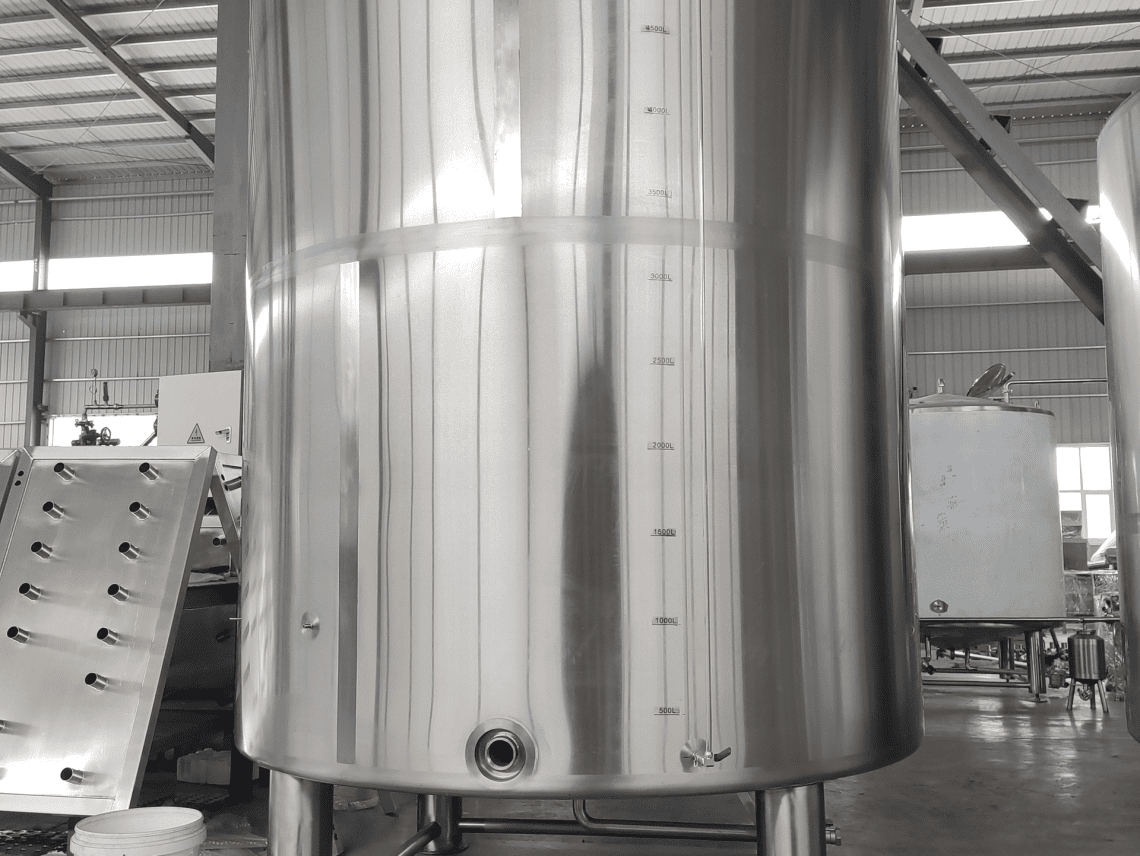
Table of Contents
ToggleGlycol plays a critical role in industrial operations, serving in applications such as antifreeze , heat transfer fluids, and moisture control systems. This versatile chemical compound is widely used across oil and gas, power generation, biogas, HVAC, and manufacturing sectors. The two most common types — ethylene glycol and propylene glycol — are chosen based on performance needs, safety, and environmental considerations. Understanding how glycol works and where it’s applied can help maximize efficiency, reduce maintenance costs, and extend the lifespan of pressure vessel systems. Learn more about our glycol storage solutions and glycol system operations.
Glycol’s unique properties make it indispensable in many systems:
Antifreeze and Coolants: Prevents freezing and overheating in automotive, HVAC, and industrial cooling systems.
Heat Transfer Fluids: Maintains stable operating temperatures in closed-loop heating and cooling systems.
Dehumidifiers & Refrigeration: Absorbs moisture effectively, improving air quality and system performance.
Chemical Manufacturing: Acts as a base ingredient for producing polymers, resins, and other industrial chemicals.
Ethylene glycol (C₂H₆O₂) and propylene glycol (C₃H₈O₂) contain hydroxyl groups (-OH) that make them highly water-soluble and effective for heat transfer. This structure enables excellent thermal performance but also makes them vulnerable to degradation when exposed to high heat, improper pH levels, or contamination. In practical terms, this means operators must monitor system conditions closely to avoid breakdowns that lead to costly downtime. Explore our guidance on glycol degradation and maintenance for more details.
Several real-world factors influence glycol stability:
Temperature: Sustained operation above recommended limits accelerates breakdown.
pH Levels: Glycol performs best between pH 7.5–10; acidic or alkaline shifts can trigger corrosion.
Contaminants: Metals, oils, or other chemicals can react with glycol, reducing efficiency and lifespan.
Tip: Install inline filtration and run quarterly fluid analysis to detect and correct issues early. Also, see our article on glycol replacement frequency to optimize maintenance scheduling.
Glycol degradation typically involves oxidation, resulting in the formation of acids, aldehydes, and other by-products. These reactions can compromise the efficiency of your cooling systems and lead to corrosion, fouling, and other issues. Regular monitoring and maintenance can help mitigate these effects and ensure optimal performance.
Maintaining glycol within a safe temperature range is critical for longevity:
| Industry | Glycol Type | Safe Range (°C) | Notes |
|---|---|---|---|
| HVAC | Propylene | -40 to 107 | Food-grade, lower toxicity |
| Power Generation | Ethylene | -40 to 121 | High thermal efficiency |
| Food Processing | Propylene | -40 to 93 | Meets FDA indirect contact standards |
Operating outside these ranges increases risk of acid formation, corrosion, and scaling.
Exceeding the optimal temperature range can lead to rapid glycol breakdown, resulting in the formation of harmful by-products. These by-products can cause corrosion, scaling, and fouling, ultimately compromising the performance and safety of your systems. Monitoring temperature and implementing controls can help prevent these issues.
It produces acidic by-products like formic acid, which corrode system components and reduce cooling efficiency.
Changes in color, pH drop, burnt odor, or sediment buildup are common warning signs.
Yes, with professional reclamation involving filtration, neutralization, and lab testing — but replacement is sometimes more cost-effective.
Common causes of glycol degradation include high operating temperatures, contamination with other chemicals or impurities, and prolonged exposure to air or oxidizing agents. Inadequate maintenance and improper storage can also contribute to glycol breakdown. Ensuring that your system operates within the recommended temperature range and regularly monitoring glycol quality can help prevent degradation.
The frequency of glycol replacement depends on the specific application and operating conditions. For most systems, glycol should be replaced every 2 to 5 years. However, regular testing can help determine the exact replacement interval. Monitoring the glycol’s pH, conductivity, and appearance will provide insights into when it’s time for a replacement.
Ethylene offers better heat transfer efficiency but is toxic; propylene is safer but slightly less efficient.
Versatile Applications: Glycol is crucial in industries like HVAC, power generation, and chemical manufacturing for antifreeze, heat transfer, and moisture control.
Types of Glycol: Ethylene glycol offers high efficiency but is toxic, while propylene glycol is safer but slightly less efficient, often used in food-grade applications.
Stability Factors: Glycol stability depends on temperature, pH levels, and contaminants, with improper conditions accelerating degradation.
Glycol Degradation: Oxidation of glycol leads to harmful by-products, causing corrosion and reduced system efficiency, which can be mitigated by regular maintenance.
Table of Contents
ToggleIn the realm of industrial solutions, Red River emerges as a pioneer, offering a diverse range of custom-engineered products and facilities. Among our specialties is the design and production of Custom/OEM Pressure Vessels, meticulously crafted to meet individual client requirements, ensuring performance under various pressure conditions. Our expertise extends to the domain of prefabrication, where Red River leads with distinction.
The company excels in creating prefabricated facilities, modules, and packages, reinforcing its stance as a forerunner in innovation and quality. This proficiency is further mirrored in their Modular Skids offering, where they provide an array of Modular Fabricated Skid Packages and Packaged equipment. Each piece is tailored to client specifications, underlining their commitment to delivering precision and excellence in every project they undertake.